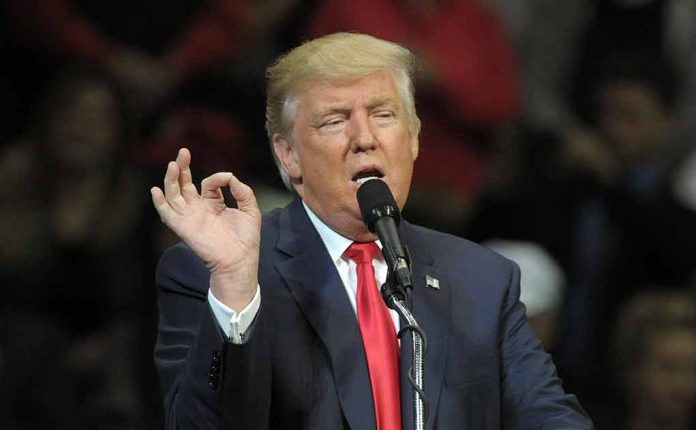
President-elect Donald Trump has unveiled a comprehensive plan to combat censorship and restore free speech in America, sparking debate on the balance between expression and regulation.
At a Glance
- Trump has announced a policy initiative to dismantle censorship and restore free speech.
- The plan includes executive orders, legislative proposals, and regulatory reforms.
- Key measures target federal agencies, tech companies, and the “censorship industry”.
- Trump frames the initiative as crucial for America’s survival and Western Civilization.
Trump’s Free Speech Policy Initiative
President-elect Donald J. Trump has unveiled a sweeping policy initiative aimed at dismantling what he perceives as a growing threat to free speech in the United States. The announcement comes amid ongoing debates about content moderation, misinformation, and the role of technology companies in shaping public discourse.
This alone puts DJT in company with the greatest U.S. presidents since Lincoln. The globalist project has laid siege to democracy and freedom across the globe. The USA is the final redoubt. President Trump just launched freedom’s counterattack. https://t.co/2brXEjTByg
— Robert F. Kennedy Jr (@RobertKennedyJr) November 9, 2024
Trump’s initiative encompasses a wide range of measures designed to protect and promote free speech across various platforms and institutions. The future president has positioned these proposals as a direct response to what he claims is a coordinated effort by “Deep State bureaucrats, Silicon Valley tech giants, left-wing activists, and depraved corporate news media” to silence Americans, particularly those with conservative viewpoints.
Key Components of the Initiative
The policy initiative outlines several concrete steps that Trump has planned to take when re-elected. These include signing an executive order to prevent federal agencies from colluding with others to censor lawful speech, banning federal money from being used to label domestic speech as misinformation or disinformation, and ordering the Department of Justice to investigate and prosecute all parties involved in online censorship.
“If we don’t have FREE SPEECH, then we just don’t have a FREE COUNTRY,” expresses Trump.
Additionally, Trump proposes revising Section 230 to ensure big online platforms are genuinely neutral, breaking up what he terms the “censorship industry,” and enacting new laws imposing steep criminal penalties on federal bureaucrats who partner with private entities to circumvent the Constitution and deprive Americans of their First, Fourth, and Fifth Amendment rights.
Digital Bill of Rights and Tech Industry Reforms
A significant aspect of Trump’s plan is the proposal for a Digital Bill of Rights. This would include the right to digital due process, requiring government officials to obtain a court order before removing online content. It would also mandate platforms to provide full disclosure of their content moderation policies and offer users opt-out options for content curation algorithms.
The initiative also targets the relationship between government agencies and tech companies. Trump proposes implementing a seven-year cooling-off period before former intelligence and national security officials can join or advise companies that handle U.S. user data. This measure aims to prevent the potential misuse of insider knowledge and connections in ways that could compromise free speech or user privacy.
Implications and Reactions
Trump’s free speech policy initiative has elicited strong reactions from various quarters. Supporters view it as a necessary step to protect constitutional rights and ensure a diversity of viewpoints in the public square. Critics, however, raise concerns about potential overreach and the implications for efforts to combat misinformation and harmful content online.
In the words of Trump himself, “The fight for Free Speech is a matter of victory or death for America—and for the survival of Western Civilization itself.”
As the debate around free speech, content moderation, and the power of tech companies continues to evolve, Trump’s proposals represent a significant moment in this ongoing discourse. The implementation and impact of these initiatives, when Trump returns to office, will likely reshape the landscape of online communication and the relationship between government, tech companies, and individual users.








